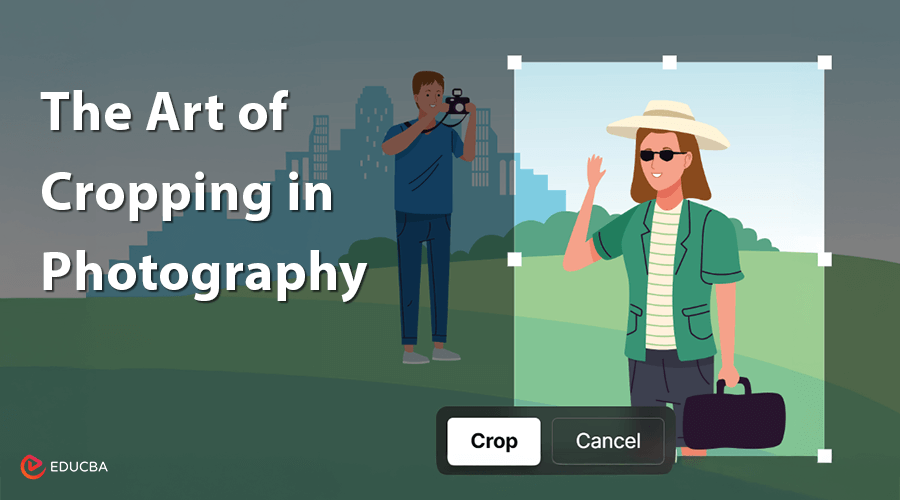Cropping in Photography: Overview
As a photographer or even a photography enthusiast, editing a picture with the most impact does not always require a filter or a tweak in saturation. Sometimes, the edit that truly stands out comes down to one simple yet powerful tool – cropping in photography. While often seen as a minor edit, cropping can turn a good photo into a great one, capturing the viewer’s imagination. In this guide, we will explore the power of cropping – from basic tips to advanced techniques that will help you enhance your photos.
The Power of Composition
At its core, cropping in photography is selecting and removing unwanted areas of an image to refocus the viewer’s attention, alter the composition, or change the dimensions for a more compelling narrative. Think of it like a magician guiding the audience’s gaze. With a well-timed crop, the focus can shift, creating a more dynamic and engaging image.
Composition plays a crucial role in how elements within a photo interact. Cropping allows you to eliminate distractions, refocus the viewer’s attention, and highlight the image’s main subject. What you crop and leave in tells a unique story that can reflect emotion, motion, or even stillness, depending on your crop choice.
Understanding Aspect Ratios
The aspect ratio is the ratio that defines the width and height proportions of an image. When cropping, adjusting the aspect ratio can dramatically change the look and feel of a photo. For example:
- 1:1 (Square): A balanced, symmetrical crop often seen on social media platforms like Instagram.
- 16:9 (widescreen aspect ratio): A cinematic, wide crop emphasizing scale and grandeur, ideal for landscapes.
Understanding aspect ratios is key to knowing how to crop for specific contexts. Adjusting the ratio can enhance the subject and make the image more impactful.
The Rule of Thirds
The rule of thirds is a famous guideline in photography composition. It involves dividing the photo into nine equal sections with horizontal and vertical lines. You can make the image more dynamic and balanced by positioning key elements along these lines or where they intersect.
When cropping, consider where the main subject lies within this framework. By cropping according to the rule of thirds, you can create a composition that looks more balanced, dynamic, and interesting.
Focusing on the Subject
One of the most important reasons for cropping in photography is emphasizing the subject and remove distractions. Cropping helps you exclude unnecessary space or objects that do not contribute to the focal point. This makes the subject clearer and changes the photo’s tone – a close crop can make the subject feel more intimate, while cropping for more space might convey isolation or vastness.
Removing Distractions
Effective cropping is about emphasizing the subject and eliminating distractions. Whether it is a distracting tree branch, an unwanted shadow, or an extra object in the background, cropping helps simplify the image and directs the viewer’s focus to where you want it.
Cropping for Impact
Cropping in photography is not just a correction tool but an opportunity to inject emotion and passion into your image. By cropping closely, you can intensify the mood, creating a sense of intimacy or tension. Conversely, cropping to include more space can evoke feelings of freedom or solitude. The key is to imagine what you want your image to say and use cropping to reinforce that message.
Cropping and Resolution
While cropping can be creatively liberating, it is important to consider how it affects image resolution. Cropping too much can cause the image to lose detail or become blurry when enlarged. To avoid this, always start with a high-resolution image to maintain quality. This will give you the flexibility to crop without compromising the overall clarity of the photo.
Online Photo Croppers
Thanks to the digital era, photo editing tools are now easily accessible to almost anyone. Online tools like watermarkly.com allow users to crop photos directly from their browser, making it simple for photographers on the go. These tools are perfect for quick edits and posting on social media. While they may not offer the advanced features of professional software, they are perfect for everyday cropping needs.
Experimenting with Shapes and Borders
While traditional crops are often rectangular or square, you can experiment with more unconventional shapes and borders. Circular, oval or even hexagonal crops can give your photos a unique look. Playing with different borders and frames can add a creative flair, transforming your image into something unexpected. Even small adjustments can result in a visually striking composition.
Common Cropping Mistakes to Avoid
While cropping can enhance your image, there are some common mistakes to watch out for:
- Overcropping: Cutting too much of the image can remove essential details or reduce the image’s resolution.
- Undercropping: Failing to crop out distractions or unnecessary elements can create a cluttered image.
Pay attention to the balance between what you crop and what you leave in. Avoid losing important parts of the subject or introducing awkward compositions.
Final Thoughts
Cropping in photography is an indispensable tool. It allows you to refine your image, refocus the viewer’s attention, and tell a more powerful story. As with any photographic technique, cropping mastery comes with practice and an understanding of compositional principles. Applying these strategies and experimenting with different crops can elevate your photos to new creative heights. So, the next time you edit your images, remember: the crop is where the magic happens.
Recommended Articles
We hope this guide on cropping in photography has been helpful. Check out these recommended articles for more tips and techniques to enhance your photography skills.

